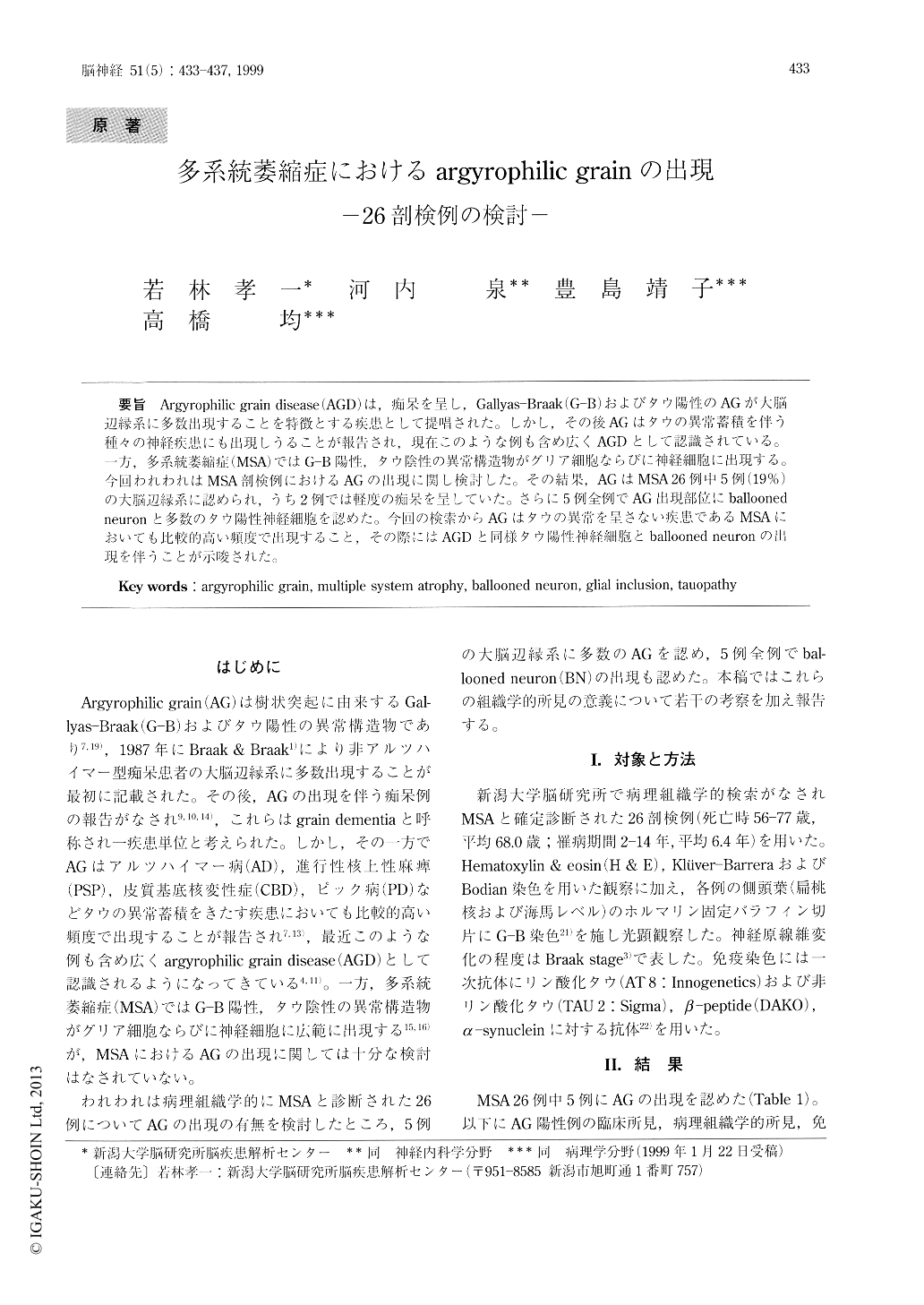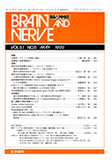Japanese
English
- 有料閲覧
- Abstract 文献概要
- 1ページ目 Look Inside
Argyrophilic grain disease(AGD)は,痴呆を呈し,Gallyas-Braak(G-B)およびタウ陽性のAGが大脳辺縁系に多数出現することを特徴とする疾患として提唱された。しかし,その後AGはタウの異常蓄積を伴う種々の神経疾患にも出現しうることが報告され,現在このような例も含め広くAGDとして認識されている。一方,多系統萎縮症(MSA)ではG-B陽性,タウ陰性の異常構造物がグリア細胞ならびに神経細胞に出現する。今回われわれはMSA剖検例におけるAGの出現に関し検討した。その結果,AGはMSA 26例中5例(19%)の大脳辺縁系に認められ,うち2例では軽度の痴呆を呈していた。さらに5例全例でAG出現部位にballooned neuronと多数のタウ陽性神経細胞を認めた。今回の検索からAGはタウの異常を呈さない疾患であるMSAにおいても比較的高い頻度で出現すること,その際にはAGDと同様タウ陽性神経細胞とballooned neuronの出現を伴うことが示唆された。
Argyrophilic grain disease (AGD) is a progressive disorder producing dementia in elderly individuals characterized by the presence of numerous AGs in the limbic system. However, the occurrence of AGs has been reported in other neurodegenerative conditions including Alzheimer's disease, Pick's disease, progres-sive supranuclear palsy and corticobasal degeneration, all of which show tau-positive cytoskeletal abnormali-ties. We examined the brains of 26 patients with multi-ple system atrophy (MSA), a neurodegenerative disor-der fundamentally lacking tau pathology, histologically and immunocytochemically.

Copyright © 1999, Igaku-Shoin Ltd. All rights reserved.


